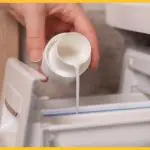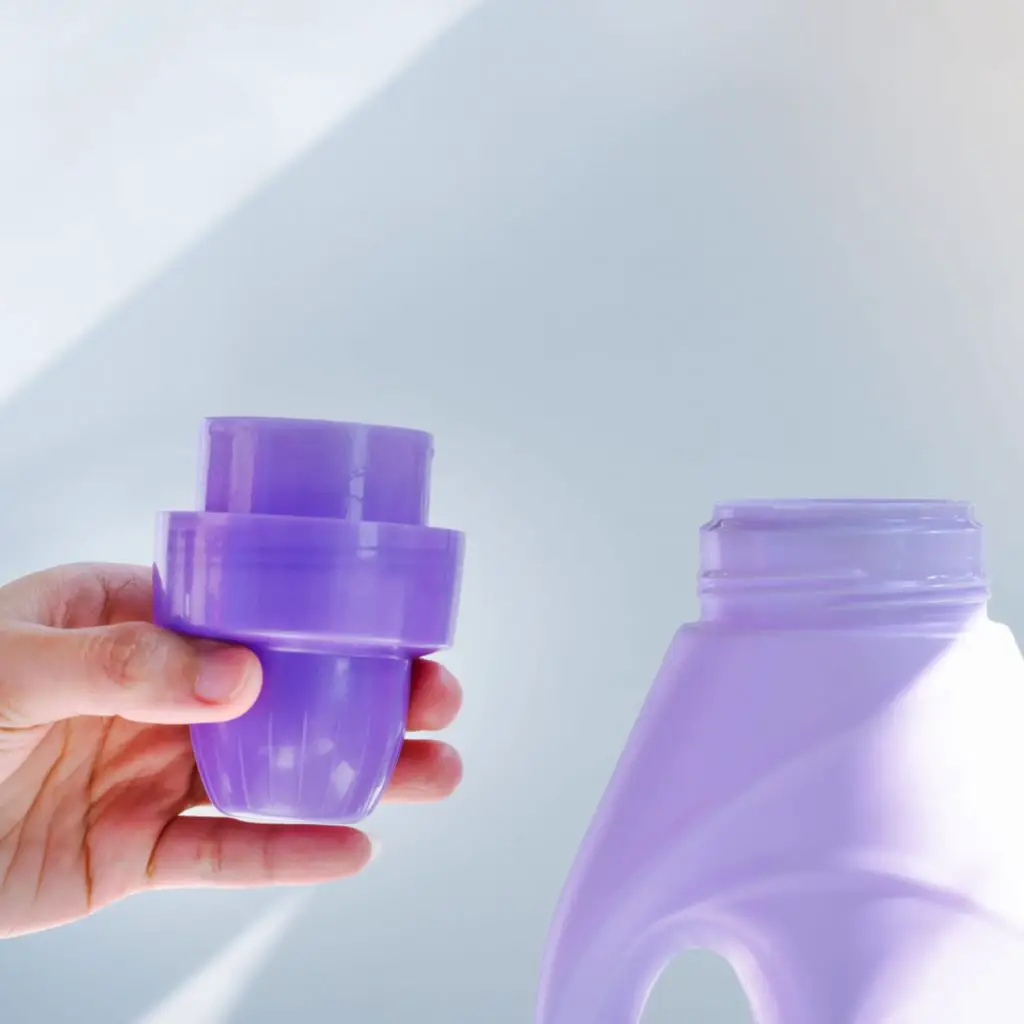Wondering if fabric softener can actually kill germs? You're not alone. Many people are curious about the germ-fighting abilities of this laundry product. In this article, we'll delve into the science behind fabric softeners and their potential to eliminate germs from your clothes.
By understanding how fabric softeners work and the types of germs commonly found on laundry, you'll gain insight into whether they can effectively combat these microorganisms. We'll also explore factors that can affect the germ-killing ability of fabric softeners and discuss alternative methods for keeping your laundry germ-free.
So, if you're eager to master the art of germ elimination in your laundry routine, keep reading to uncover the truth about fabric softeners and germs.
Key Takeaways
- Fabric softeners help eliminate germs and reduce the risk of infections.
- They neutralize odors and eliminate bacteria that cause unpleasant smells.
- Fabric softeners inhibit the growth of mold and mildew, improving fabric hygiene.
- Good laundry hygiene practices, along with the use of fabric softeners, can help eliminate harmful bacteria on clothes.
The Basics of Fabric Softeners
Fabric softeners are commonly used to make your clothes feel softer and reduce static cling. They work by coating the fabric fibers with a thin layer of chemicals that help to smooth out the roughness and reduce friction between the fibers. This not only makes your clothes feel softer but also helps to prevent static electricity from building up.
In addition to enhancing the feel of your clothes, fabric softeners can also aid in fabric care by reducing wrinkles and making ironing easier. When it comes to laundry hygiene, fabric softeners can contribute to maintaining cleanliness by minimizing the buildup of dirt and grime on the fabric, thus making it easier to remove during the wash.
It's important to use fabric softeners as directed to ensure that they're effective without causing any damage to your clothes. By incorporating fabric softeners into your laundry routine, you can improve the overall quality of your garments and enhance your fabric care and laundry hygiene practices.
Understanding Germ Elimination
Wondering how fabric softeners can contribute to germ elimination in your laundry routine? It's essential to understand the role of fabric hygiene and germ resistance. Fabric softeners help maintain fabric hygiene by reducing the build-up of bacteria, mold, and mildew on your clothes. This contributes to germ elimination in your laundry, keeping your clothes fresh and clean. When fabric softeners are used in the wash, they not only leave your clothes feeling soft and smelling great but also help in reducing the presence of germs.
Here's a quick look at how fabric softeners contribute to germ resistance:
| Fabric Softener Benefit | Description |
|---|---|
| Antibacterial | Fabric softeners with antibacterial properties help eliminate germs, reducing the risk of infections. |
| Odor Elimination | By neutralizing odors, fabric softeners help in eliminating the bacteria that cause unpleasant smells. |
| Mold and Mildew Prevention | Fabric softeners inhibit the growth of mold and mildew, which contributes to better fabric hygiene. |
| Long-lasting Freshness | They leave a protective layer on the fabric, providing long-lasting freshness and germ resistance. |
Understanding these benefits enhances your laundry routine, ensuring that your clothes not only feel soft but also maintain high levels of cleanliness and germ resistance.
Types of Germs on Laundry
When doing laundry, it's important to understand the types of germs that can be present on your clothes. Various types of bacteria can find their way onto your laundry, including E. coli, salmonella, staphylococcus, and norovirus. E. coli and salmonella are commonly found on undergarments and kitchen towels due to fecal contamination and can cause food poisoning and other illnesses. Staphylococcus can lead to skin infections, while norovirus can cause stomach flu and gastrointestinal issues.
To combat these germs, it's crucial to practice good laundry hygiene. This includes washing your clothes at the appropriate temperature, using an effective laundry detergent, and ensuring that your laundry is completely dry before storing it. Additionally, consider using a laundry sanitizer or adding a disinfectant during the wash cycle.
Proper laundry hygiene practices can help eliminate these harmful bacteria, keeping you and your family safe from potential infections. By understanding the types of germs that can lurk on your laundry, you can take proactive steps to maintain a clean and healthy home environment.
Effectiveness of Fabric Softeners
So, let's talk about how effective fabric softeners are at killing germs and their impact on the fabric.
Are fabric softeners actually able to eliminate germs from your laundry, or is their germ-killing power exaggerated?
And what about the effect of fabric softeners on the overall cleanliness and freshness of your clothes?
Germ-Killing Properties
You can find out if fabric softeners effectively kill germs by examining their ingredients and understanding their impact on bacteria and other microorganisms. Fabric softeners contain chemicals that can affect germ resistance and bacterial growth. Here are some key factors to consider:
- Chemical composition: Understanding the specific chemicals in fabric softeners can provide insight into their ability to kill germs.
- Germ resistance: Some fabric softeners are designed to target and eliminate germs, contributing to a cleaner and more hygienic laundry.
- Softener application: The method of applying fabric softener, such as during the rinse cycle, can impact its germ-killing effectiveness.
- Bacterial growth: Fabric softeners may inhibit the growth of bacteria, helping to maintain freshness and cleanliness in your laundry.
Impact on Fabric?
To assess the impact of fabric softeners on fabric, examine how they affect the texture and durability of your garments. Fabric softeners work by coating the surface fibers of fabric to make them feel smoother and reduce static. While this can improve the feel of the fabric, it's essential to consider the impact on longevity.
Over time, fabric softeners can decrease the absorbency of towels and the moisture-wicking properties of sportswear. Additionally, the coating left by fabric softeners may reduce the breathability of certain fabrics.
When using fabric softeners, it's important to follow the manufacturer's guidelines and consider the specific care recommendations for your garments. This will help maintain the fabric's integrity and ensure that the impact of fabric softeners on your clothes is balanced with their benefits.
Factors Affecting Germ-Killing Ability
When it comes to killing germs with fabric softener, there are a few key factors to consider.
The type of fabric and the type of softener used can impact the germ-killing ability.
Additionally, the water temperature used during the laundry cycle can also play a role in how effective the fabric softener is at killing germs.
Fabric Type and Softener
Choosing the right fabric type and softener significantly impacts the ability to kill germs in your laundry. When it comes to fabric composition, different types of fabric can affect how well germs are killed. Certain fabrics, like cotton or polyester, may respond differently to softeners and disinfectants, affecting germ removal.
Additionally, the way you apply fabric softener can also influence its germ-killing effectiveness. The method of applying fabric softener, whether through a dispenser or during the rinse cycle, can impact its germ-killing ability.
Understanding how germs behave on various fabric types can help tailor your softener and disinfectant choices. Germs on Different Surfaces.
Some disinfectants work better with specific fabrics, so it's essential to select the right one for your laundry needs. Disinfectant Options.
Water Temperature and Softener
Adjusting the water temperature when using fabric softener directly impacts its ability to kill germs in your laundry. The temperature at which you wash your clothes plays a crucial role in determining the effectiveness of the fabric softener in eliminating germs.
Hot water is more effective at killing germs compared to cold water. When the water temperature is higher, the fabric softener can work more efficiently to eradicate germs from your laundry.
It's important to note that some fabric softeners are designed to work best at specific temperatures, so always check the label for guidelines.
Alternatives to Fabric Softeners
You can replace fabric softeners with alternatives such as vinegar or baking soda. These natural alternatives offer chemical-free options for softening your laundry and reducing static cling. Here are some alternatives to consider:
- Vinegar: Add half a cup of white vinegar to the washing machine's fabric softener dispenser. The acetic acid in vinegar helps soften clothes and reduce static without leaving any residue or fragrance.
- Baking Soda: Sprinkle a quarter cup of baking soda into the washing machine during the rinse cycle. Baking soda not only helps soften fabrics but also acts as a natural deodorizer and can help balance pH levels.
- Wool Dryer Balls: These reusable dryer balls help soften clothes, reduce static, and decrease drying time. Simply toss them in the dryer with your laundry.
- Homemade Fabric Softener: Create your own fabric softener by mixing water, hair conditioner, and white vinegar. This DIY alternative is customizable and allows you to control the ingredients used.
These natural alternatives provide effective ways to achieve soft, static-free laundry without relying on traditional fabric softeners.
Best Practices for Germ-Free Laundry
To ensure your laundry is germ-free, it's important to consider the best practices for maintaining cleanliness and eliminating bacteria.
Start by sorting your laundry properly, separating items like undergarments and towels from regular clothes.
Use the appropriate water temperature, as hot water can help kill germs.
Be sure to measure and use the correct amount of detergent, as using too little may not effectively remove bacteria, while using too much can leave a residue.
Don't overload the washing machine to allow enough space for thorough cleaning.
After washing, promptly transfer the laundry to the dryer or line dry it in the sun, as the heat can further aid in bacteria removal.
Clean your washing machine regularly to prevent the buildup of mold and bacteria, and remember to wash items like reusable grocery bags that can harbor germs.
Finally, consider using laundry sanitizers or additives for an extra layer of protection.
Following these best practices for laundry hygiene will help keep your clothes germ-free and your household healthy.
Frequently Asked Questions
Can Fabric Softener Be Used as a Substitute for Laundry Detergent?
You can't use fabric softener as a substitute for laundry detergent. While fabric softener can make clothes feel softer and reduce static, it doesn't have the cleaning power of detergent. Stick to using it as a finishing touch.
What Are the Potential Health Risks Associated With Using Fabric Softener?
Using fabric softener can pose potential health risks, as it may contain allergens that could cause respiratory issues. It's important to be mindful of the ingredients and to consider alternatives if you have sensitivities.
Are There Any Natural Alternatives to Fabric Softeners for Germ-Killing Purposes?
Looking for natural alternatives to fabric softeners for germ-killing? You can try using essential oils like tea tree or lavender, vinegar, and baking soda. These options are effective and safer for your health and the environment.
Can Fabric Softener Effectively Eliminate Mold and Mildew on Laundry?
Fabric softener may not effectively eliminate mold and mildew on laundry. Consider natural remedies like vinegar or essential oils, which can be alternatives for germ-killing purposes. Test the duration and effectiveness of these options for best results.
How Long Does the Germ-Killing Effect of Fabric Softener Last on Laundry?
The effectiveness of fabric softener in killing germs on laundry can vary. Factors like water temperature, laundry load, and type of fabric can influence durability. It's best to follow product instructions for optimal results.
- Tetron Fabric for Marine Applications: Durability and Use Cases - June 18, 2025
- Tetron Fabric for Outdoor Furniture: Weather Resistance and Care - June 18, 2025
- Tetron Fabric for Wall Coverings: Style and Application Tips - June 18, 2025





